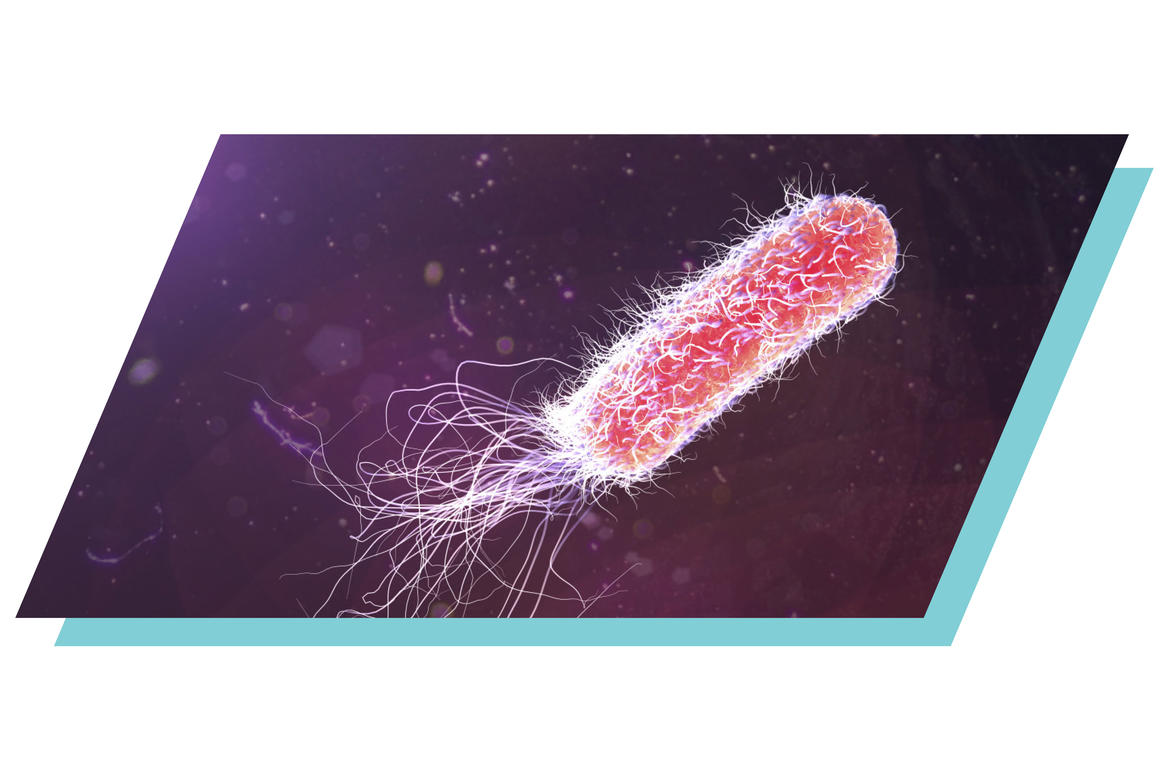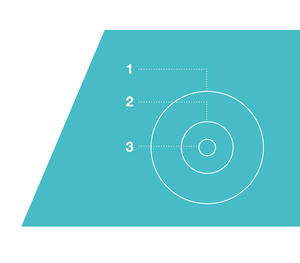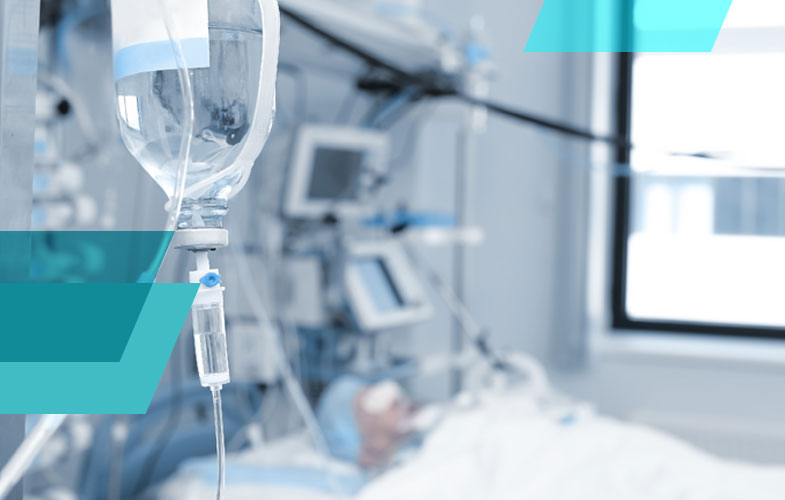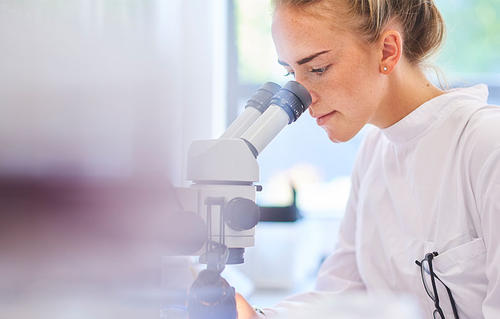Patients with weakened immune systems, the use of invasive procedures and poor adherence to measures for the prevention of infection all promote the transmission of pathogens at the ICU.Monitoring systems help to identify problems and to improve hygiene measures in the ICU.
Each surgical procedure, however critical or necessary to save a patient’s life, will bring with it serious consequences: operations can present an entryway for microbes to enter the patient’s body and cause serious infections. These infections, termed hospital-associated infections (HAI, or in the US, often referred to as nosocomial infections) are often responsible for patients not surviving their stay in ICU, or not recovering to their former strength as before their surgery. HAI can be either local or systemic diseases which are triggered due to reactions to pathogens from either endogenous or exogenous sources, or due to the toxins produced by these pathogens.1
According to information from the European Center for Disease Prevention and Control (ECDC), 8% of patients, over the course of 2014, who remained in ICU for longer than 2 days had at least one HAI2. In low-to-medium income countries, the problem is even more prominent: compared to wealthier countries, the frequency of HAIs in these countries is around 2-3 times higher.3
“There are three main causes that are responsible for the higher HAI risk in patients on intensive care units,”
explains Professor Dr. Petra Gastmeier, Head of the Institute of Hygiene and Environmental Medicine at the Charité in Berlin, and expert in the monitoring of hospital-acquired infections.
“Firstly, patients in intensive care beds tend to have multiple catheters, such as central venous catheters, urinary catheters and endotracheal tubes. Pathogens can work their way along these entry routes, and gain access to the patient’s body. Second, these patients are seriously ill, and often have to undergo multiple diagnostic, therapeutic, or nursing procedures each day. These interventions increase the risk of pathogens being transferred from one patient to the next. Thirdly, underlying diseases and long-term treatments, such as antibiotic treatments or chemotherapy, impair the immune system of intensive care patients. These types of treatments disrupt the gut microbiome, and make it easier for bacteria to get from the intestines into the blood, and trigger sepsis.”
All three of these risk factors can commonly be found in ICUs, and can only be mitigated to a limited extent. Whilst good hand hygiene can be effective in combatting the transmission of pathogens between patients, other factors are unavoidable, such as the use of invasive procedures and catheters, and damage to the intestinal barrier with the outside world.
The most frequently-occurring HAIs found on ICUs are pneumonia (6%), septicaemia (4%) and urinary tract infections (3%)4.The vast majority of pneumonias and urinary tract infections are associated with intubation or the use of urinary catheters.
HAI

HAI (or HCAI) stands for “hospital-associated/acquired infection” or “healthcare-associated infection”, and in the US is often referred to as a “nosocomial infection” (from the Latin for hospital, nosocomium) This term is used to describe infections, which patients have acquired in connection with a medical intervention that has taken place within a hospital setting, at a care facility, or in out-patient settings.
https://www.hygiene-in-practice.com/glossary/hospital-associated-infection-hai-hcai/
ECDC

The European Center for Disease Prevention and Control (ECDC) is an EU agency which aims to arm Europe in its fight against the spread of infectious diseases. The ECDC was founded in 2005, and is based in Solna, Sweden. You can find information profiles on pathogens such as Staphylococcus aureus here:

Infections of the bloodstream (septicaemia) can either be catheter-related or the result of another primary infection, such as pneumonia, gastrointestinal infections, and urinary tract infections, as well as infections at the surgical site. In a fifth of cases of septicaemia, the source of the infection is unknown. Post-operative wound infections (SSI) represent some of the most frequently occurring HAIs5. Antibiotic-resistant bacteria such as Staphylococcus aureus, Pseudomonas aeruginosa (see image), Escherichia coli and Klebsiella spp. are also often the cause behind HAIs, and increase the risk of serious complications.
Adhering to infection prevention measures, such as good hand hygiene, is critical to preventing the transmission of pathogens from patient to patient. Staff-to-patient transmission is rare (Gastmeier P et al, 2005), but handling of patients will contaminate the hands of care staff. If proper hand hygiene is not ensure following these types of contact, the care staff can pass the pathogens on to the next patient.
“Patients at the ICU are often unconscious or seriously ill,”
Gastmeier explains.
“For this reason, it is vital that healthcare professionals adhere to hygiene regulations. On most ICUs, compliance rates have risen to 60-80 percent in recent years. This has made a significant contribution to the prevention of infections, but there are still huge differences between individual ICUs. As such, monitoring systems are important to further push down infection rates.”

Collecting data for a good cause
The first clinical studies demonstrating the positive influence of monitoring measures on the incidence of HAIs were carried out in the 1980s (Morrison AJ Jr et al., 1987). Since then, many countries have put local monitoring systems in place, and several studies have confirmed a decrease in HAIs shortly after these measures were taken. The Hospital Infection Surveillance System (‘KISS’, from its German acronym) in Germany is the largest surveillance system in Europe, and also has a dedicated module for intensive care units (ITS-KISS)6. In this way, researchers can collect data on both infections and responsible pathogens. Furthermore, ITS-KISS makes it possible to monitor patients suffering from multi-resistant pathogens, and cases of C. diff-associated diarrhoea (Schröder C et al., 2015).
“Monitoring systems are particularly important for quality assurance,"
Gastmeier goes on.
“Currently, there are more than 1,000 intensive care units who report their data to the national reference centre. This makes it possible for medical professionals to monitor the frequency of HAIs in their units over longer periods of time, and compare their data with those of other intensive care units. It is important for the ICU’s to then engage with this data, and take targeted measures.”
ICUs participate in KISS on a voluntary basis. Hospitals as a whole, however, are under an obligation to implement monitoring for HAIs. Many different European countries introduced surveillance systems in the 1990s, developing these further over the past 20 years. Data from Germany and other EU member states is collected by the ECDC in Stockholm. The centre supports the member states, and coordinates point-prevalence studies on HAIs and antimicrobial therapies on intensive care units.
“In the past 20 years, we have shown that monitoring systems lead to a significant reduction in infection rates,” says Gastmeier. “Doctors can precisely track the incidence of HAIs in [1]their hospitals, and intervene as and when required.”
A recent study has been investigating HAIs in over 60,000 patients across Germany. The authors were able to demonstrate a significant reduction in serious HAIs in intensive care units that had put an infection control programme in place (Hagel S et al., 2018). As more and more hospitals introduce surveillance systems, or improve existing ones, it is vital that hospitals and infection control specialists keep working together effectively. This cooperation needs to be evaluated and updated at regular intervals to ensure this.
“Digitalisation could help to optimise monitoring systems,”
Gastmeier said, in summary.
“Automated data acquisition would make work processes far more simple, and would reduce the amount of work required to record infection rates.”
Are you involved in the daily fight against infections?
Register here for our ‘hygiene in practice’ newsletter, and receive regular news, research results and practical insights into infection prevention in the healthcare sector!
https://www.hygiene-in-practice.de/newsletter/
SSI

Accounting for approx. 22% of total HAIs, SSIs are the second most common HAI in Germany; this is, in part, due to the fact that the number of surgical interventions continues to increase. According to the WHO, SSIs are the most common form of HAI in low and middle-income countries.
Download our SSI fact sheet here.
Hospital-acquired infections and microbial resistance

- 400,000–600,000
Hospital-acquired infections - approx. 30,000
Hospital-acquired infections due to resistant pathogens - approx. 1,500
Hospital-acquired infections due to multi-resistant pathogens which are resistant to almost all the different antibiotic classes (particularly 4MRGN)



